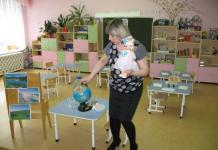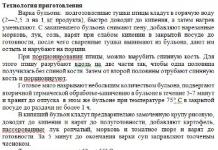Temples of the monastery
Currently, the monastery has two functioning churches - in honor of the Epiphany and in honor of the icon of the Mother of God "Joy of All Who Sorrow" and a church under construction in honor of St. Nicholas the Wonderworker.
Monasteries
The monastery has two monasteries: in honor of St. Sergius of Radonezh in the village of Novy Usad, Arzamas district, Nizhny Novgorod region, and in honor of the Nativity of St. John the Baptist in the village of Novaya Sloboda, Arzamas district, Nizhny Novgorod region.
Shrines of the monastery
Revered Icon of the Mother of God “Deliverance from the Troubles of the Suffering”
Revered icon “It is worthy to eat”
Reliquaries with particles of relics of various saints.
History of the monastery
The time of foundation of the St. Nicholas Convent is not precisely established. Presumably the monastery appeared around 1580. It is known that in 1588 a carved sculpture of St. Nicholas of Mozhaisky was donated to the new monastery. Subsequently, the monastery was patronized by Tsar Vasily Ivanovich Shuisky, who during his short reign managed to donate a mill to the monastery. Tsar Mikhail Fedorovich also provided great assistance to the monastery.
The first buildings of the monastery existed until the great fire of the first third of the 17th century, when, in addition to the monastery, the Arzamas fortress also burned down. Warm Epiphany Church It was soon restored with charitable funds and was the only one in the monastery for about 30 years. Only in 1683 was the first stone St. Nicholas Church rebuilt and consecrated.
A new big fire occurred in 1726. However, through the efforts of the sisters and residents of the city, the monastery rose again. In 1738, on the site of a warm wooden church, a stone two-story church was built in honor of the Epiphany. On the ground floor of the temple there was a hospital church in honor of the icon of the Mother of God “Joy of All Who Sorrow.”
Since 1764 it was a dormitory convent III class.
Before the closure of the monastery in the twentieth century, various workshops operated on its territory: painting, seamstress, gold-embroidery, shoemaking, knitting and others. A hospital with a pharmacy, an orphanage, an almshouse, and a school were also opened. More than 200 nuns lived in the monastery.
In 1918, Arzamas became the headquarters of the Eastern Front of the Red Army. The buildings of the St. Nicholas Monastery were partially adapted to accommodate the arriving units. On September 15, 1920, the nuns of the monastery united into the Nikolaev Labor Artel with a valid charter in accordance with Soviet legislation. Until the summer of 1923, the sisters of the artel fulfilled an urgent military order to sew hats for the Red Army, knitted nets for the Main Fishing Agency, washed floors in the premises of government agencies, and also worked in the fields of the region. Despite the loyal attitude towards the Bolsheviks, in 1928 the artel was dispersed and the monastery was closed.
The church buildings of the monastery were partially destroyed, and partially began to be used for housing and various secular institutions.
In 1994 the monastery was transferred Nizhny Novgorod diocese, the restoration of the monastery and the revival of monastic activity began.










Good day!
I want to tell you a little about the city of Arzamas. We stopped in Arzamas, making a detour on the road from Diveevo to Murom. Since we had little time, our goal was Cathedral Square.
This is the historical center of the city. On the square there are churches, a monastery, and a museum of the Russian patriarchate.
Please note Museum of the Russian Patriarchate . The museum building was built in 1740 -1750. in Baroque style.
Museum of the Russian Patriarchate is a joint project of the Nizhny Novgorod State Historical and Architectural Museum-Reserve and the Nizhny Novgorod Metropolis of the Russian Orthodox Church. This is the only museum in the world where the life of Russian Patriarchs is covered. It was opened on August 1, 2013. The uniqueness of the museum lies in the fact that it shows the period of the Patriarchate of Soviet times - the life of the Church in the era of persecution, starting with His Holiness Patriarch Sergius - a native of the city of Arzamas.

Also on Cathedral Square is Resurrection Cathedral , built according to the design of M.P. Korinfsky in honor of the victory over Napoleon.
Years of construction of the cathedral: 1814-1842.
A very beautiful monumental temple. The frescoes preserved in it are unique, but since the temple is summer, we were not able to see them.

Across the road from the Ascension Church is Church of the Icon of the Mother of God “Life-Giving Spring” . Built in 1796 The building has retained almost its original appearance. The temple is winter, but it was also closed.
I consider the main attraction of Arzamas Arzamas Nikolaevsky Convent .

This is a functioning convent. Known since the 16th century.
We were amazed Church in honor of the icon of the Mother of God “Joy of All Who Sorrow” .




There are many wonderful icons in this temple. Come in and see the Icons of St. Nicholas the Wonderworker, the Venerables Sergius of Radonezh and Seraphim of Sarov, the icons of the Mother of God “Deliverance from the troubles of the afflicted” and “It is worthy to eat” (chopped). A pre-revolutionary shroud embroidered with silver is kept here.
The atmosphere of the temple is amazing. It is felt that many dozens of sufferers prayed here.
Each shrine is worthy of attention, but I want to highlight icon “Deliverance from the troubles of the afflicted.”
No photographs were taken in the temple. In the photo, an icon purchased in a church shop.


Icon “Deliverance from the troubles of the afflicted” has its own complicated history.
In 1997, this icon was brought to the monastery by two residents of Arzamas. Then it looked like a dark board that they found in their barn. They couldn’t figure out whether it was an icon at all. It was impossible to understand what was depicted on it. The icon was taken to the reserve.
One day, the abbess of the monastery, Abbess Georgia, found this icon while sorting out the reserve, and ordered to place it in a frame, hang it in the monastery and pray to the Most Holy Theotokos in front of it. The nuns of the holy monastery began to pray in front of the icon and ask for help in their various needs.
Soon a small light spot appeared on the icon, on which the neck of the Virgin Mary and the hand of the Divine Infant were depicted.
In mid-2000 the icon began to quickly cleanse itself, the blackness disappeared, the faces of the Mother of God and the Savior appeared, but the name of the icon was impossible to read.
Summer 2001 the inscription with the name of the icon was cleared. The monastery says that the icon is still being cleaned. As the nuns said, people who bought icons came to them and told them that their icons, which they prayed to, were changing just like the original.
We were very lucky: we took part in the reading of the Akathist in front of the icon. Afterwards there was anointing. The Akathist is read every week, except during Great Lent.
There is a notebook in the monastery where they write down their stories of deliverance from illnesses and troubles.
Some evidence of miracles is given in the brochure with the Akathist to the icon of the Mother of God “Deliverance from the troubles of the afflicted.”









On one of the bends of the Tesha River in 1552, Ivan the Terrible founded the border city of Arzamas. In the last quarter of the 16th century, in the very center of the city on the main Cathedral Square, another monastery (female) was erected, consecrated in the name of St. Nicholas, the Wonderworker of Myra.
The builder of the monastery was Arzamas resident Feofilakt Yakovlev. Initially, he built a temple in the name of St. Nicholas with a side chapel of the saints Cosmas and Damian without silver. Hegumen of the Arzamas Spasopreobrazhensky Monastery Sergius donated a large carved image of the saint to this temple, which soon became famous for numerous miracles and healings of the sick. The builder of the temple was ordained a priest and began to serve in the parish of the church he built. The same abbot Sergius gave him the idea of establishing a women's monastery at the temple. Then Father Theophylact, for the needs of the future monastery, built a still warm wooden church in the name of the Epiphany of the Lord, a bell tower and cells for thirty sisters. This was the beginning of the first women's monastery in Arzamas, which, from the image of St. Nicholas the Wonderworker, began to be called Nikolskaya - Nikola New Forgiveness (forgiveness means forgiveness, liberation from illness, and therefore from sin).
Twice in its history - in 1650 and 1726. - the monastery burned to the ground. The first time it was restored at the expense of the widow of Father Theophylact Pelagia and his sons Gregory and Athanasius. For the second time, the city, and with it the monastery, was devastated by a fire, perhaps the most terrible in the entire existence of Arzamas. Stone Church of St. St. Nicholas the Wonderworker, built after the first fire, collapsed from strong fire. However, thanks to the efforts of the abbess, the tireless work of the sisters, and donations from city residents, the St. Nicholas Convent was restored again.
![]()
In 1738, a new cold stone church of St. Nicholas the Wonderworker was built in the monastery. Patterned cornices and window frames, a porch and a terrace on the south side made the façade of the temple especially elegant. The temple was famous for its excellent acoustics. Votes in the form of jugs were installed in the walls, which were later sealed up. This temple, as well as the wooden church in the name of the Epiphany, were erected through the efforts and labors of the abbess of the monastery, Maria (Gruzinka), who ruled the monastery for 30 years (1719-1749).
In 1764, after the church reform of the government, the Nikolaev nunnery became a full-time third-class monastery, with a salary for the abbess and 16 sisters.
From 1777 to 1784, the monastery was also ruled by Abbess Maria. In 1777, through her efforts, the wooden Epiphany Church was replaced with a stone one. In 1779, she decorated the St. Nicholas Church with a wooden sculptural group depicting the Burial of the Savior. Its author was the talented Arzamas priest Vasily Ilyin. All figures were carved to human height. They represented four evangelists standing at the tomb in which the Savior lay; at His heads stood an angel with a real candle and Joseph of Arimathea, at His feet another angel and Nicodemus. Near the tomb is the weeping Mother of God, supported by John the Theologian, and Mary Magdalene. It was an example of expressive, hitherto unprecedented church art.
In the 19th century, a wide variety of women's handicrafts flourished in Arzamas. Around 1840, a new craft appeared in the Nikolaevsky Monastery: they began to knit shoes and boots from multi-colored wool with patterns in the form of flowers and leaves. All Arzamas fashionistas wanted to have such elegant shoes, the monastery was literally inundated with orders and soon this handicraft was adopted by city girls and women. In the 1860s, 10,000 or more pairs of such boots were knitted per year, and this product was taken to all cities of Russia. Thus, the Nicholas Monastery gave the city a new craft and enriched the women of Arzamas.
On April 5, 1886, at the age of 81, the oldest archpriest died Nikolaevsky Monastery, confessor of the Arzamas clergy Avraamy Nekrasov. After graduating from the Nizhny Novgorod seminary, due to his inclination towards monastic life, Abraham was inclined to take monastic vows, but did not receive blessings for this. In 1828 he married and in the same year he was ordained a priest. He served in the Trinity Church in the village of Pavlovo, where he served for 25 years until 1853.

In the first year of his priesthood, Father Abraham visited the Sarov Monastery. Father Abraham took a blessing from the illustrious elder Seraphim and asked about his fate. The great ascetic gave him instructions and predicted that he would be a denouncer of schismatics, would endure many attacks and lies, and would become a dean. All this came true in due time. Father Abraham conducted extensive correspondence with his spiritual children. Two of his most beloved spiritual children entered the Sarov Monastery, one of them later became the abbot of the monastery.
Bishop of Nizhny Novgorod and Arzamas Jeremiah, being himself a strict monk, especially favored the Arzamas women's monasteries. Wanting to exalt them even more, he transferred the best priests of his diocese to them. From 1853 until his death, Father Abraham served and spiritually cared for the sisters of the Arzamas St. Nicholas Monastery, which became his home. Not being a monk, Father Abraham completely abandoned meat. Allowing his old and sick sisters more nutritious food, he aggravated his fast, taking their burden upon himself. Father was very attentive to the sisters, in the summer he always visited each one’s cell, talking about salvation, supporting them and comforting them. He always performed divine services reverently and slowly.
Father Abraham reverently honored the memory of Seraphim of Sarov and willingly shared with his sisters his memories of meetings with him. Every year on the eve of the day of the saint’s death (January 15, New Art), he served a memorial service for him, at his own expense he bought many candles, which he placed in front of all the icons in the temple and distributed into the hands of all those praying. As the greatest shrines he kept a flap from the saint’s mantle, a tooth once knocked out by the robbers who attacked him, and part of the hair from the head of Father Seraphim. On the eve of his death, he handed over all this to the nun Euphrosyne, who later became the abbess of the monastery.
The death of Father Abraham was easy and calm, such as only happens to the righteous - “shameless and peaceful.” It is possible that through the wise guidance of this disciple St. Seraphim The Nikolaev monastery knew neither squabbles nor quarrels and, being on the main cathedral square city, maintained the strictness of monastic life. 
After 1928 the monastery was closed. The cells were turned over for housing, and the church buildings gradually deteriorated and collapsed.
In 1994, the monastery was returned to the Church, and monastic life began to be revived there. With great difficulty, the warm Epiphany Church and cells for the sisters were restored. The people of Arzamas love their monastery, especially since it is the only one that is now being restored out of ten that were here before the revolution. The monastery lives from its labors and therefore is reborn slowly, hoping for the help of benefactors.

In 2001, 25 sisters lived in the monastery, led by Abbess Georgia (Fedotova).


























